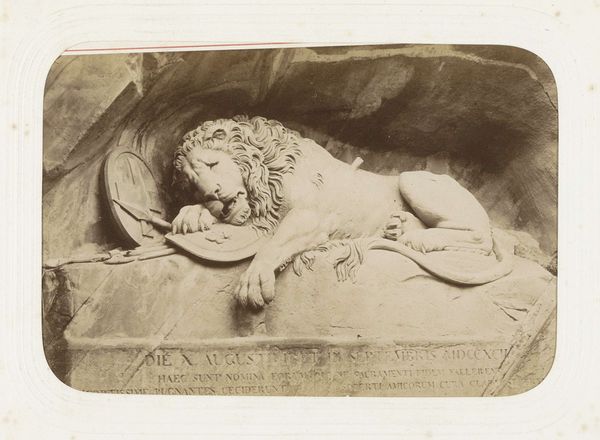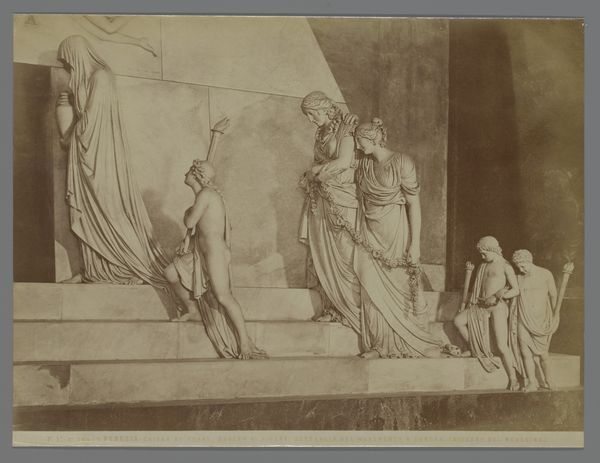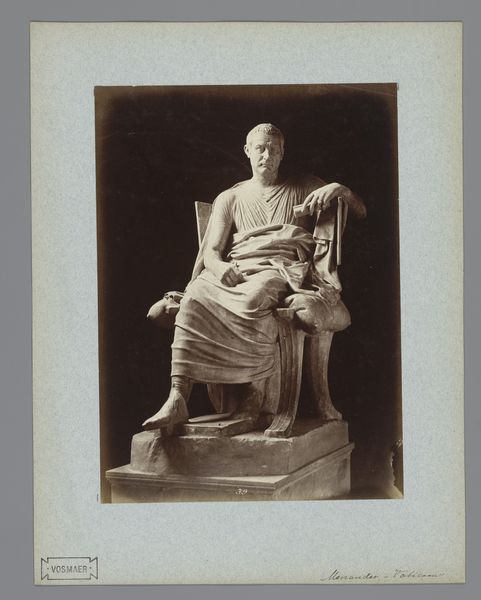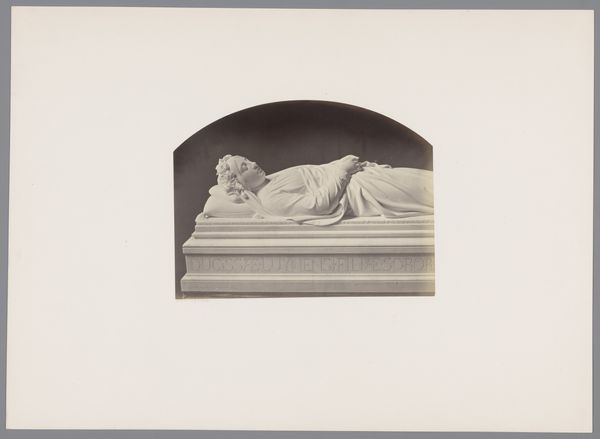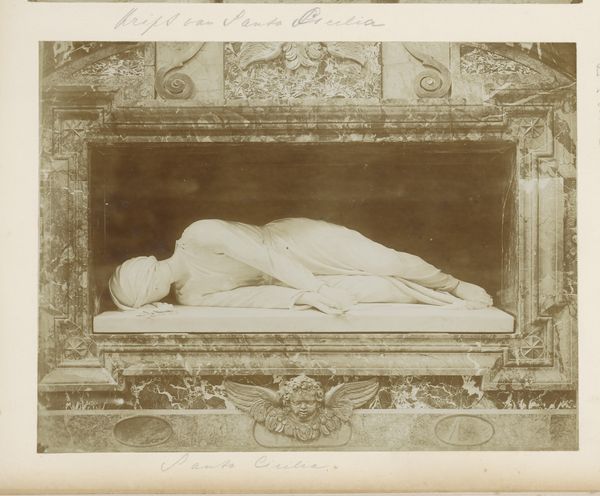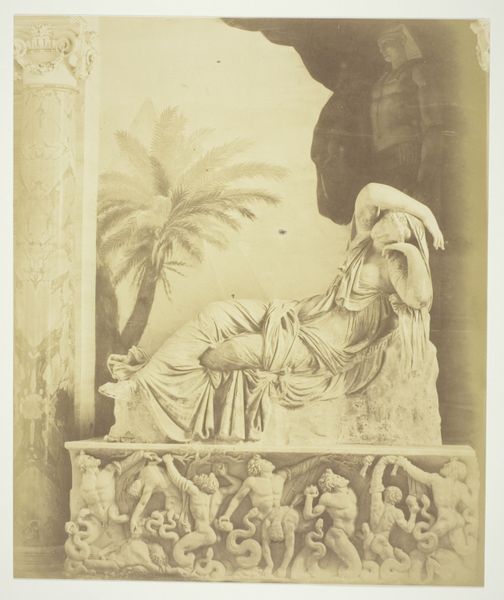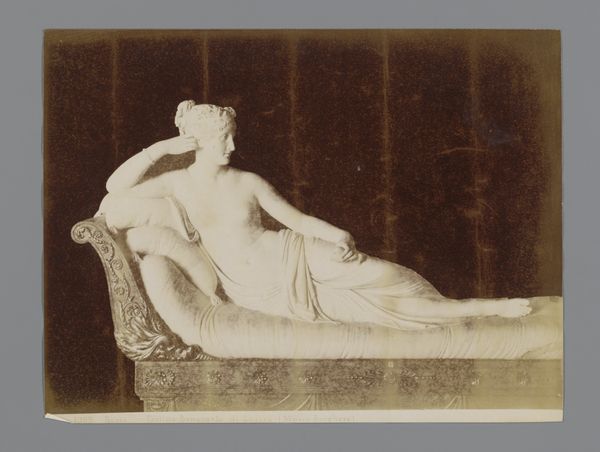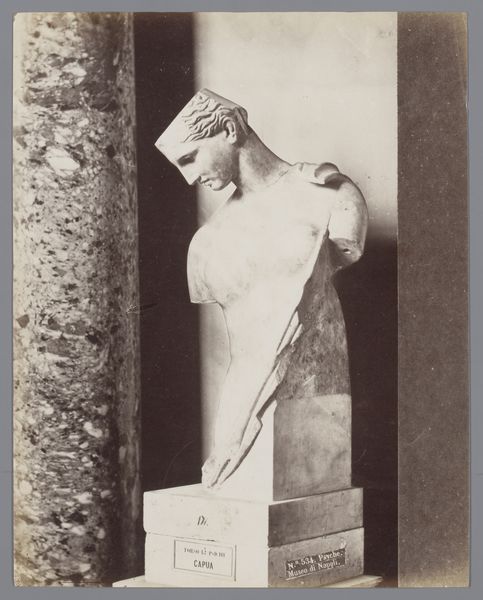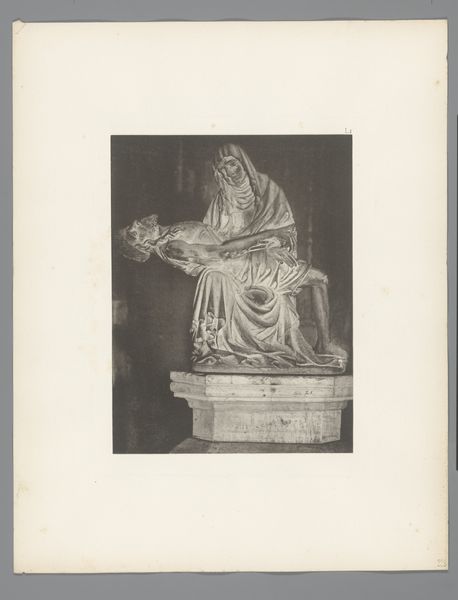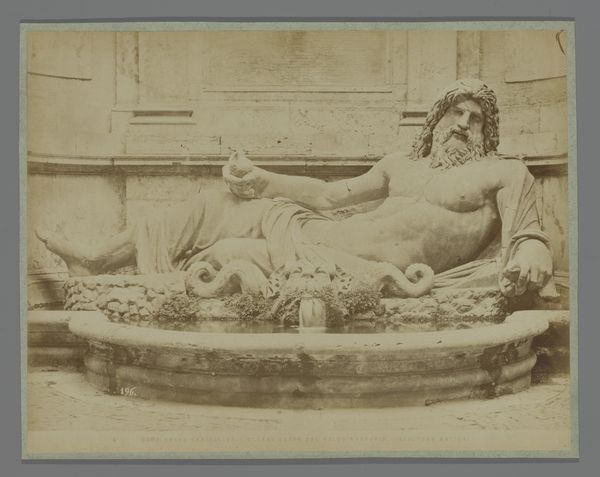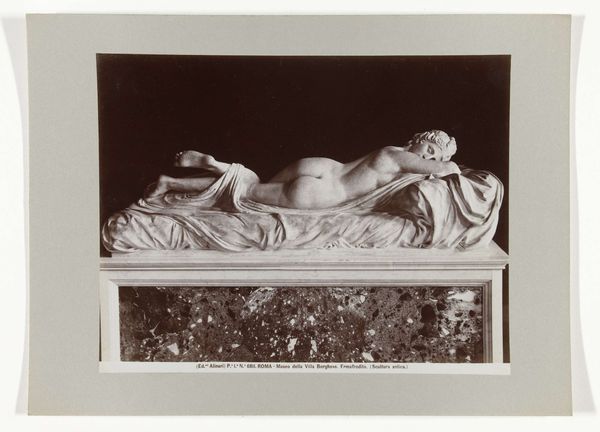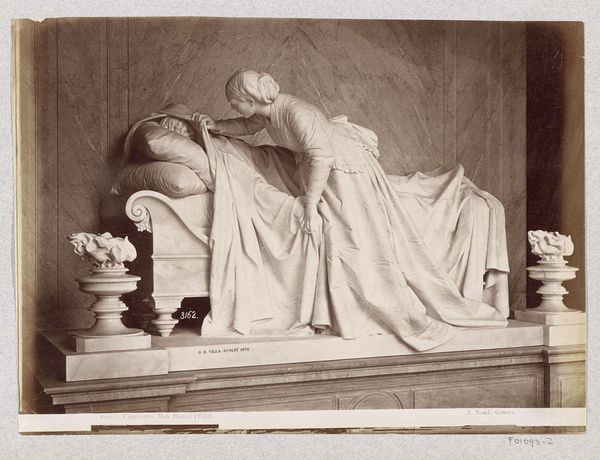
photography, sculpture, gelatin-silver-print, marble
#
landscape
#
classical-realism
#
figuration
#
photography
#
romanesque
#
sculpture
#
gelatin-silver-print
#
history-painting
#
academic-art
#
marble
#
nude
Dimensions: height 203 mm, width 260 mm
Copyright: Rijks Museum: Open Domain
Editor: Here we have a photograph, titled "Sculptuur van slapende Ariadne, Vaticaan" taken by James Anderson sometime between 1857 and 1875. It's a gelatin silver print of a marble sculpture. It feels very classical, almost romantic, and it’s… striking how the photo almost makes the sculpture seem alive. What strikes you when you look at it? Curator: As a materialist, I see a chain of production: from quarrying the marble and the sculptor's labor, to Anderson's photographic work, and finally the consumption of this image by viewers like us. We must think about the social context surrounding it: how access to and interpretation of classical art served specific ideological purposes in the 19th century. Editor: That's a very interesting perspective! So, you're thinking less about the artistic intention behind the sculpture and more about the… industrial processes involved? Curator: Precisely! How does the mass production and consumption of these photographic prints change the artwork’s meaning? This sculpture, originally an emblem of elite culture, is made accessible to a broader public via photography. Also, consider Anderson's role: He's not just documenting; he is, in a sense, manufacturing culture through his photographic enterprise. Editor: I never thought about it that way. Now I see it less as a static image of a sculpture and more like a product itself. Is the value then derived from the original artwork, or does the photograph have its own separate value due to its reproduction and distribution? Curator: The tension between original and copy, the means of dissemination – those are the crucial points. Photography democratizes art, but it also commodifies it. It's not just about aesthetics, it's about who has access and control, and the labor involved in the whole chain. Editor: I’m so used to thinking about the artistic intent. Focusing on the production process really reframes it! I will definitely keep that in mind. Thanks. Curator: Likewise. Looking at this familiar piece from this angle, the production behind it helps me notice it in a new light too.
Comments
No comments
Be the first to comment and join the conversation on the ultimate creative platform.
